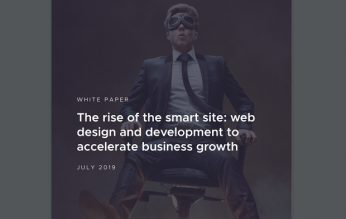While B2B sales are typically complicated, your website shouldn’t be (at least not to your user). Below are eight essential things every B2B website design must have:
- Clear Navigation
Your website’s navigation is not the time to get creative with copy or design. The navigation is a utilitarian element and you want the user to easily find exactly what they are looking for (and quickly) through your main navigation.
- A Homepage that Tells Your Brand Story
Always assume the user coming to your B2B website knows nothing about your company. As such, you want to take them on a journey, starting with an attractive hero image or video and a short and poignant brand statement. As the user scrolls down the page, engage them with subtle animation, short blocks of copy, and imagery to support it. Your website’s home page must give the user a reason to stay and explore further.
3. Products and/or Services Section
A section of your B2B web design must be dedicated to going into a decent amount of detail about your products and services. This can start with a product or services landing page that gives a quick overview of everything your firm has to offer.
From there, the user should have the option to go one step further and get to a page with more detail. However, when I say detail, I don’t mean a page full of long-form copy. I’m talking about concise, engaging bits of content with imagery, illustrations, photography, and/or videos to support it. You don’t need to tell the whole story, but enough of the story to educated the user so they are motivated to take action, such as filling out a form or picking up the phone.
4. Clear CTAs and Contact Page
Don’t make a prospect or client visiting your website search for how to contact you. Buttons, pop-ups, chat features, and an easy-to-find contact page are absolutely critical to any successful B2B website design.
Read more: The Top Elements of Effective B2B Web Design







